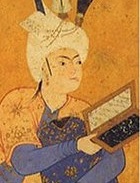first edition
1975 · New York:
by GRAUNT, John (1620-1674).
New York:: Arno Press, 1975., 1975. Reprint from 1662 imprint. [Series & cover title: European Sociology, Arno Press series editor: Lewis A. Coser]. Small 8vo. [iv], 90, [4] pp. Large folding Table of casualties. Dark green cloth, white-stamped titles. Ownership signature of Arthur L. Frank. Very good. Reprint. The scientific study of the numbers, characteristics and territorial distribution of populations - today called demography - began with Graunt (Printing and the Mind of Man). Graunt drew up his statistical tables from the birth and death records of parish clerks. From this he constructed the first tables of life expectancy, and, through applying (truncated)






